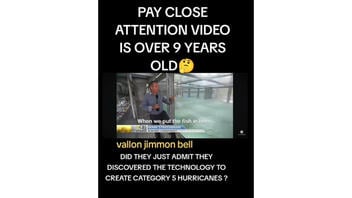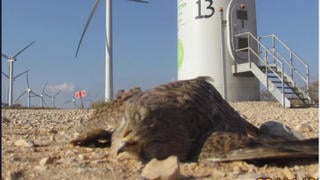
Did scientists at the University of Miami "admit" in 2015 that they can create real hurricanes? No, that's not true: A "CBS This Morning" news story from 2015 showed the lab and interviewed the scientists conducting the tests, which involved using a 1,700-horsepower fan to move water in a 38,000-gallon tank. Scientists did develop hurricane-like conditions in a lab setting to better study how to save lives when real hurricanes occur.
The question about hurricane-creating scientists was asked in the caption for a video (archived here) posted on TikTok on October 16, 2024, under the title, "PAY CLOSE ATTENTION VIDEO IS OVER 9 YEARS OLD".
The caption under the video read:
DID THEY JUST ADMIT THEY DISCOVERED THE TECHNOLOGY TO CREATE CATEGORY 5 HURRICANES?
This is what the post looked like on TikTok at the time of writing:
(Source: TikTok screenshot taken on Thu Oct 17 16:45:48 2024 UTC)
Following back-to-back deadly hurricanes Helene and Milton in 2024, some social media posts suggested without evidence that the U.S. government was creating and controlling such storms and the places where they came ashore. Lead Stories debunks of some of these claims are here.
The video included in the post on TikTok comes from a May 29, 2015, broadcast (archived here) by "CBS This Morning." The show profiled the work of the Rosenstiel School of Marine, Atmospheric and Earth Science (archived here) at the University of Miami. A video portion of that story was included in the TikTok post to raise the question of whether scientists could create Category 5 hurricanes.
The answer: They created Category 5 hurricane-like conditions -- but only in a laboratory, in a 38,000-gallon tank. It's called the Surge Structure Atmosphere Interaction Laboratory or SUSTAIN. The university posted a short video (archived here) about SUSTAIN on YouTube on June 11, 2024.
According to the 2015 CBS news story, scientists filled the tank with seawater, then used a computer program and a 1,700-horsepower fan to create wind inside the tank of up to 157 miles per hour, similar to wind speeds in a Category 5 hurricane. (archived here).
Using the tank, researchers were able to track storm surges and the effect of water temperature to create more dangerous storms.
There was nothing in the CBS report shared on TikTok that suggested scientists can create real hurricanes outside of a tank in a laboratory.
Lead Stories contacted the University of Miami about the claim and will update this story if a response is received.
Previous Lead Stories fact checks of claims about hurricanes can be found here.


















